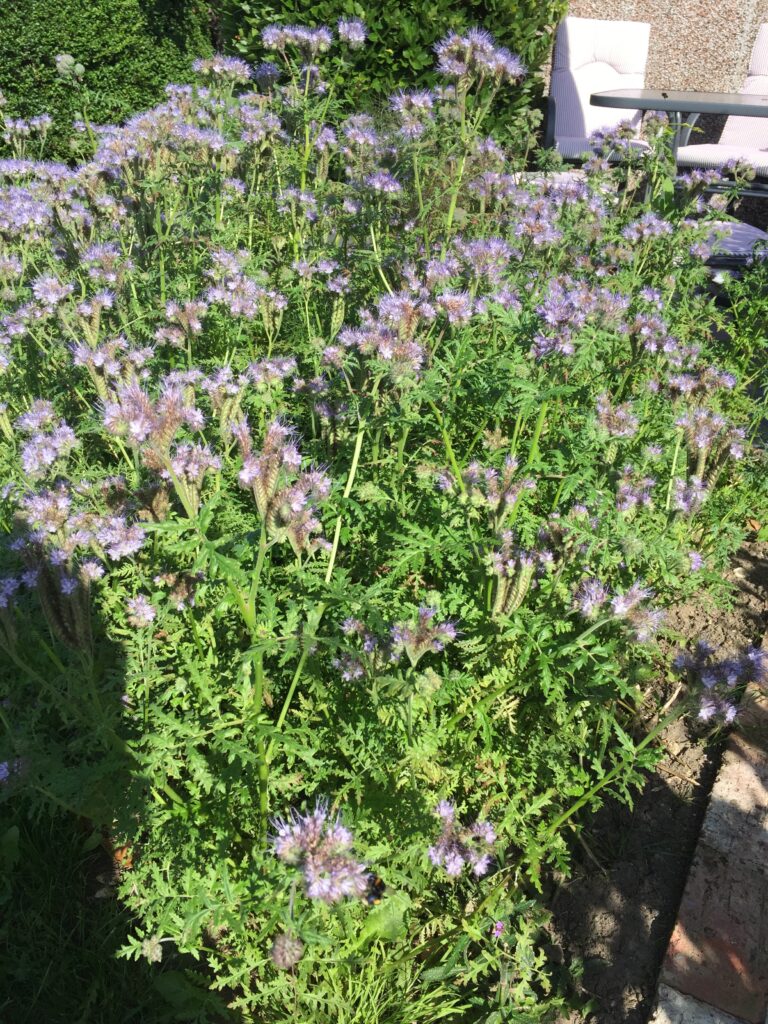How many Red Admirals have you seen this year?
On a breezy day there were 18 feeding and basking in the shelter of this sunny Ivy hedge.
But the Ivy does not open until the end of September . So where do the bees and butterflies go after the fruit blossom and the Midsummer meadows have finished? Some kinds of bees will be finishing their nesting but many more need a quantity of flowers to fill the gap from July-September but our summer holiday memories have always been of the parched colour of the countryside.
Now is the time when some non-native garden flowers are essential. Sussex University’s measured flight paths of bees have shown that they are wasting their energy in flying further to find the fewer choices of food in late summer.
The Dahlias which have stamens steadily attract bees such as this Carder Bumblebee. Some varieties attract more than others but comparing them is best done in a place where the bees are warm, so there are more of them around.
Zinnias need sowing indoors in early spring. Plenty of strong colours for us to enjoy and the right taste for the Red Admiral here. Collect the snails at dusk and avoid attracting them by watering in the morning not the evening.
How can we tell if a flower provides plenty of rich nectar and pollen? Try sowing a whole square yard of one of Dave Goulson’s 5 star plants and compare the result with other flowers.
This one is Phacelia or Fiddleneck. In May this bed had the lawn removed from the surface. We lightly loosened the surface so we could draw some drills to sprinkle the seed. The only attention needed was to keep the ground damp with a rose on the watering can. Slugs and snails leave this plant alone and it was in full flower by the end of July with no bare earth. There are still a few left in mid October.
It is hard to snap a photo of a crowd of bees but this 2yd patch constantly had more than the goal of 10 pollinators of all kinds per square yard. Too many to count easily. However the numbers were fewer when the sea breeze was stronger and cooler. So a popular plant like Phacelia can demonstrate how important it is to create borders with warm shelter from bushes so the bees can visit on more days.
Phacelia grows so fast it is possible to have 2 flowerings per summer if the first one is sown in autumn.
I you want to feed more bees, hoverflies and butterflies in your garden I would highly recommend the Dave Goulson book “Gardening for Bumblebees‘ This is one of my most used books in my ample garden bookshelves. He writes helpfully from personal experience like real gardeners do, mindful of the hit and miss of growing flowers. This is not written by a conservationist with a shopping list.
Melene






